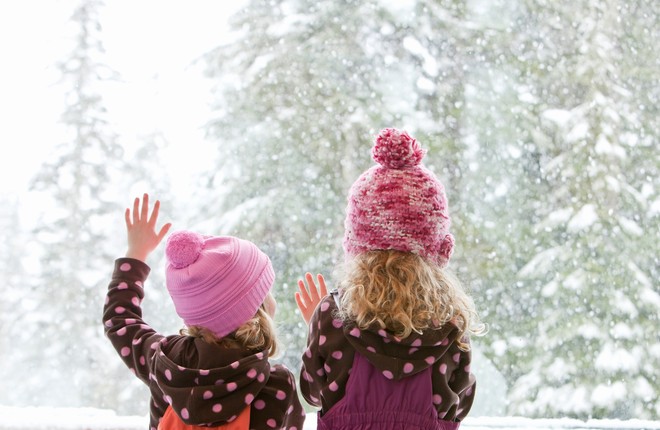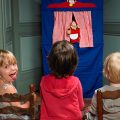"My God, only minus thirteen, but I want toput on red knitted woolen underpants and sit at home with a plaid and cocoa "- this thought did not leave my frozen head all the way to work. And the children at this time cheerfully (well, no, not really) were carried to school and rolled on sledges in the gardens. “This is unmerciful,” I continued to think with my frozen head. “Or maybe I'm just used to greenhouse winters?” In the village, at -30 I went to school, and nothing. ”But seriously, what numbers should be on the thermometer to fully leave the child at home, and this will not be considered a absenteeism? Turns out pretty impressive. And the older the child, the more frost-resistant it can be. Photo: GettyImagesHere they are, these numbers.— when the temperature is -32 and below, everyone stays at home without exception;— at -30, ninth-graders and younger ignore school;— at -28, schoolchildren from the seventh grade and younger may not go to classes;— at -27, fourth-graders and all other elementary school students stay at home;— if the thermometer shows -26, only the youngest - first- and second-graders - can stay at home. However, there are two more adjustments. One is for the wind. We have indicated the subzero temperature in windless weather. If the gusts are up to 5 meters per second, feel free to subtract a degree from the upper limit. And if the wind is stronger, you can subtract as many as two degrees. That is, first-graders can stay at home at -24 and below. But high school students have the right to attend school only at -28 and colder. The second adjustment is regional. The local health department has the right to set its own maximum temperatures at which you can go to school. So don't be lazy and take a look at the website of your local administration - maybe your child already has a legal reason to sit by the heater. Well, unfortunately, parents won't be so lucky. We adults will have to go to work in any weather, through the most severe frost.
Photo: GettyImagesHere they are, these numbers.— when the temperature is -32 and below, everyone stays at home without exception;— at -30, ninth-graders and younger ignore school;— at -28, schoolchildren from the seventh grade and younger may not go to classes;— at -27, fourth-graders and all other elementary school students stay at home;— if the thermometer shows -26, only the youngest - first- and second-graders - can stay at home. However, there are two more adjustments. One is for the wind. We have indicated the subzero temperature in windless weather. If the gusts are up to 5 meters per second, feel free to subtract a degree from the upper limit. And if the wind is stronger, you can subtract as many as two degrees. That is, first-graders can stay at home at -24 and below. But high school students have the right to attend school only at -28 and colder. The second adjustment is regional. The local health department has the right to set its own maximum temperatures at which you can go to school. So don't be lazy and take a look at the website of your local administration - maybe your child already has a legal reason to sit by the heater. Well, unfortunately, parents won't be so lucky. We adults will have to go to work in any weather, through the most severe frost.

Making Money with Desserts: Success Stories
Evgeniya Polischuk (Fedutinova) instagram:@evgeniyafedutinovavk.com/janeshomebaking– It all started with baking for family and friends. Gradually, I started posting photos of my baked goods on Instagram – and orders started coming in. I made my first custom-made cake on October 13, 2014, and a little earlier I started making macaroons and cupcakes. You could say that the business “found me”, I am very […]

Soups are cold recipes with photos
Cold cucumber soup with yogurt and lemonsorbet from the chef of the restaurant La Taverna Alexander Zhurkin Photo: Getty Images Ingredients: Plain yoghurt – 125 g Cucumber – 150 g Lemon/lime sorbet – 50 g Cocktail shrimp – 24 g Fresh ginger juice – 1 g Lime juice – 5 g Fresh orange juice – 5 g Parsley – 1 g Pink pepper – 1 g Watercress – […]

barbeque kebab
Pork tenderloin in glaze Photo:Dmitry Bayrak/dbstudioPreparation time: 20 minutes + marinating time.Calories: 454 kcal per serving.For 4 servings: 4 pork tenderloins (approximately 300 g each), 1 onion, 2 cloves of garlic, 1 tsp. lemon zest, 1 tsp. lemon juice, a pinch of ground cumin, coriander and turmeric, 1 tbsp. vegetable […]

Pierre Duacan: dietary recipes: Ducane diet
Beetroot soup Photo:Season’S, Luxury Hotels RepresentationYou will need:· Boiled beetroot – 60 g· Fresh cucumbers – 20 g· Red radish – 20 g· Green onions – 10 g· Egg – 1 pc.· Drinking mineral water – 200 g· Salt – 1 gPreparation:· Boil the egg and beetroot.· Grate the cucumbers, radish and part of the beetroot. Put everything […]





